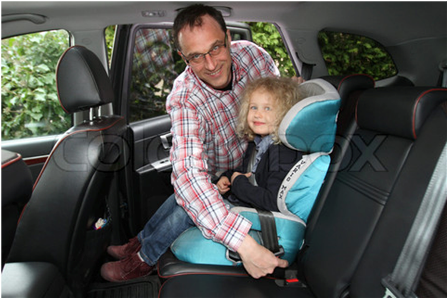ABU DHABI | A study of car crashes at the Institute of Public Health of UAE University in Al Ain has found that 98 per cent of passengers were not wearing a seat belt – and not a single child restraint was used in any of the vehicles.
The research, looked at crashes that killed or injured children over a 17-month period.
A total of 245 patients under the age of 19 were admitted to Al Ain Hospital and Tawam Hospital after road accidents during the research period.
The study focused on those who died at hospital or who were admitted for more than 24 hours and found that 170 of the 245 were either drivers (48) or passengers (122) in a car, while the others injured were pedestrians, motorcyclists or cyclists.
Of the 170 car occupants injured or killed, only three were wearing a seat belt, while not a single child restraint was used in any of the vehicles.
The World Health Organisation recommends that children over the age of 10 should wear a seat belt and younger children should be in a child restraint.
The research showed a high number of children had been ejected from cars during crashes because they were not properly belted in.
Using a child restraint correctly reduces risk of fatality among infants by 71 per cent and among toddlers by 54 per cent, he said.
The study found that just 13 per cent of motorcyclists wore a helmet while no cyclists wore any protective headgear. The enforcement was also needed to create a law on wearing helmets.
The study focused on crashes involving children and 27 per cent of those killed or injured were boys under 18, most of them Emirati.
However, the boys were actually driving the cars at the time of the crash and one driver was only 14.
The legal age to hold a UAE driving licence is 18.
Emiratis made up 67 per cent of the crash victims, while males accounted for 79 per cent of the total number of people involved in the study. The majority (57 per cent) were aged between 15 and 19.
The study found that in more than a third of the crashes (37 per cent), the vehicle rolled over, while 32 per cent were head-on collisions. Injuries were most common in the rear-seat position.
June, July and August were the most common months for crashes and Thursday nights – at the start of the weekend – were the most common time of week for accidents.
The most prevalent injures were to the head (42 per cent), while the most extreme injuries were to the chest and spine.
The study concluded that male drivers and Emiratis were at high risk of road-traffic collisions, as drivers and as motorcyclists. The rate of ejection from a vehicle was high because of the extremely low rate of seat-belt use.
More education and law enforcement, focusing especially on car booster-seat usage is needed.
Road accidents kill about 100 children in the UAE every year, according to the study.
The Paediatric and Youth Traffic-Collision Injuries in Al Ain study looked at hospital admissions between April 2006 and October 2007 and wasposted in the online medical journal PLOS One last month.



